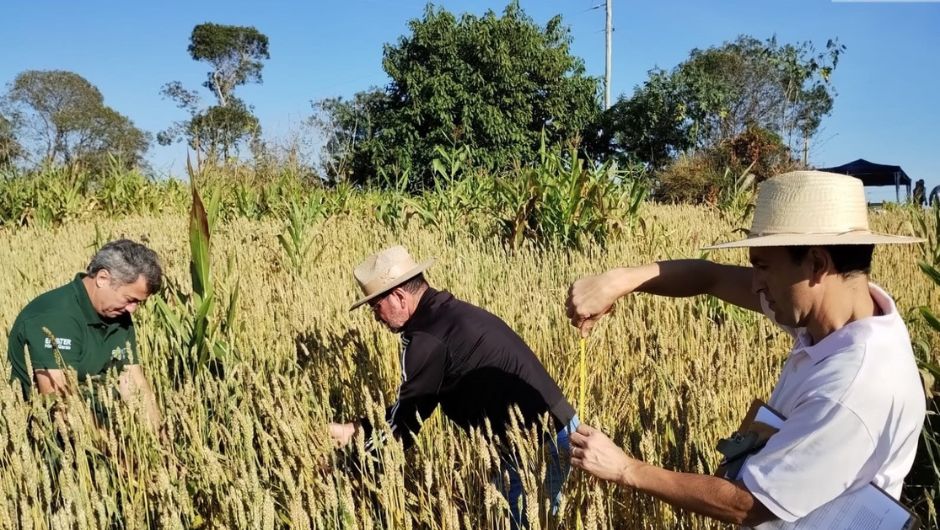Soybean harvest approaches 50% of the cultivated area in RS
There remain considerable areas of soybean crops to be harvested, especially in the southern half of the state, where the oilseed cycle has ended

Wheat, known as a cold climate crop, is a novelty that has now arrived in some of the hottest regions of Minas Gerais (MG). In recent weeks, Emater-MG and Epamig have implemented 20 demonstration units of Epamig's MGS Brilhante wheat cultivar in various regions of the state, including the North of Minas and the Jequitinhonha Valley. The proposal is to use the grain in the production of silage to feed cattle.
In 2023, the two companies implemented cultural demonstration units in municipalities in the South and Southwest of Minas and in Campo das Vertentes. This year, the project was also expanded to Zona da Mata, East, Central and North of Minas, in addition to the Jequitinhonha and Mucuri Valleys. The research, funded by the Minas Gerais State Research Support Foundation (Fapemig), has shown promising results.
“The wheat cultivar MGS3 Brilhante is resistant to drought and heat and in the demonstration units implemented, producers obtained forage with excellent nutritional quality for the animals, with good productivity in an off-season period for summer crops, such as corn and soybeans, which is usually a time when the land is still”, explains Epamig researcher and coordinator of the “Wheat Demonstration Units for Silage Production” project, Maurício Coelho.
Emater-MG selected producers to implement experimental crops and provides guidance to farmers throughout the production process. “The productivity of the units implemented in 2023 was very good, which is why we decided to expand the cultivation areas to other regions of the state. The wheat cultivar MGS3 Brilhante is a viable and nutritious option for silage, with quality demonstrated by the good zootechnical performance of the animals evaluated”, explains the regional technical coordinator of Emater-MG, Marcelo Martins.
The proposal to expand the number of Demonstration Units throughout the state of Minas Gerais aims to bring this technology to as many producers as possible. “The possibility of producing with your own seed reduces the cost of production and participating farmers become multipliers of the system in their respective regions”, says Maurício.
The Epamig researcher explains that, thanks to the genetic improvement work on wheat, it is now possible to take the crop to warmer regions of the State. “Wheat will not produce in the summer. But as Minas Gerais has many areas with altitudes above 600 meters above sea level, we try to plant from March onwards and in places with higher altitudes”, explains Maurício.
According to the technical coordinator at Emater-MG, Marcelo Martins, wheat production is much cheaper than second-season corn, which already has a lower cost than the first harvest. “Wheat is a great winter crop option, because it protects the soil, preventing it from drying out due to the wind and invasive pests”, says Marcelo.
Another advantage is that with crop rotation (from corn to wheat) there is no need to combat pests. “The use of chemical products was almost zero, which in addition to being better environmentally, greatly reduces production costs”, explains the Emater-MG coordinator. But as wheat is rich in protein and poor in energy, the coordinator says that the ideal is not to replace corn silage with wheat, but to rotate crops.

Receive the latest agriculture news by email